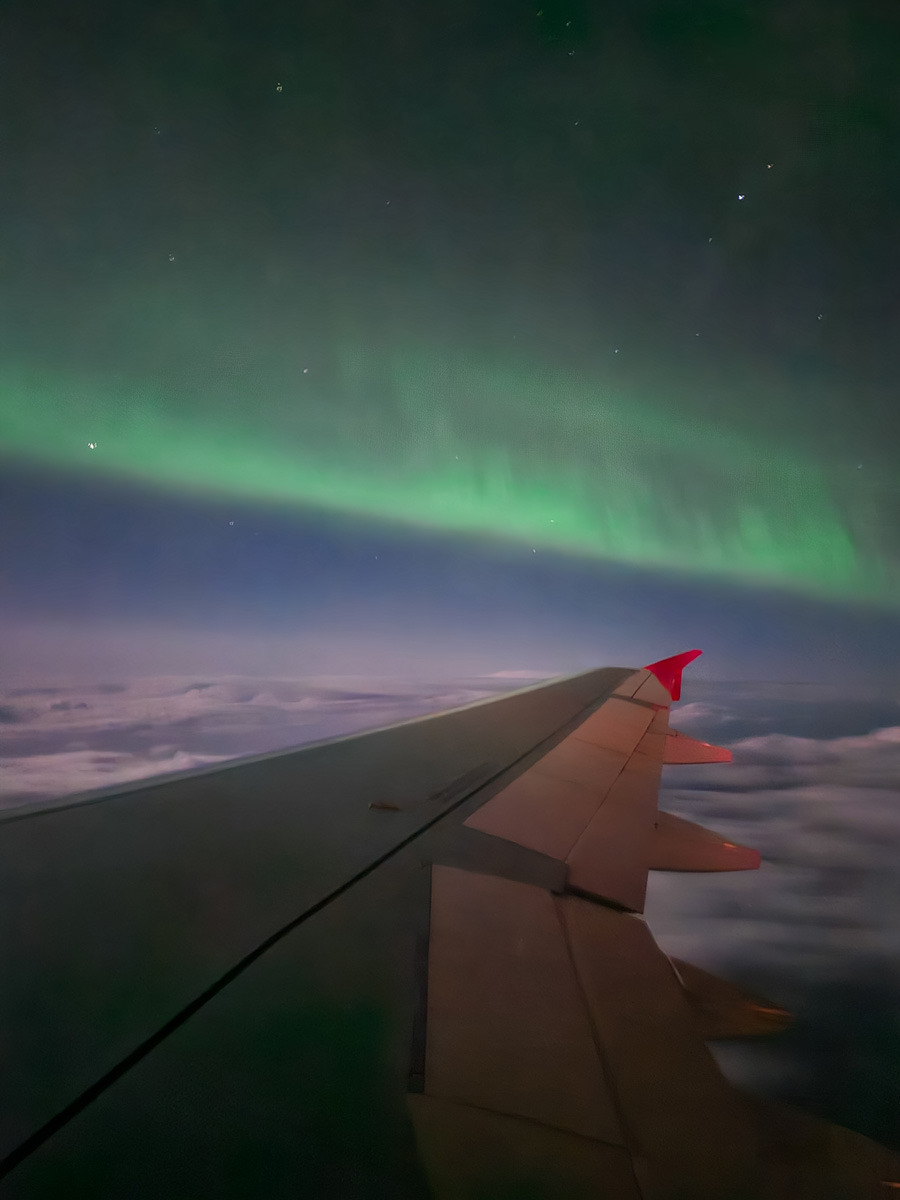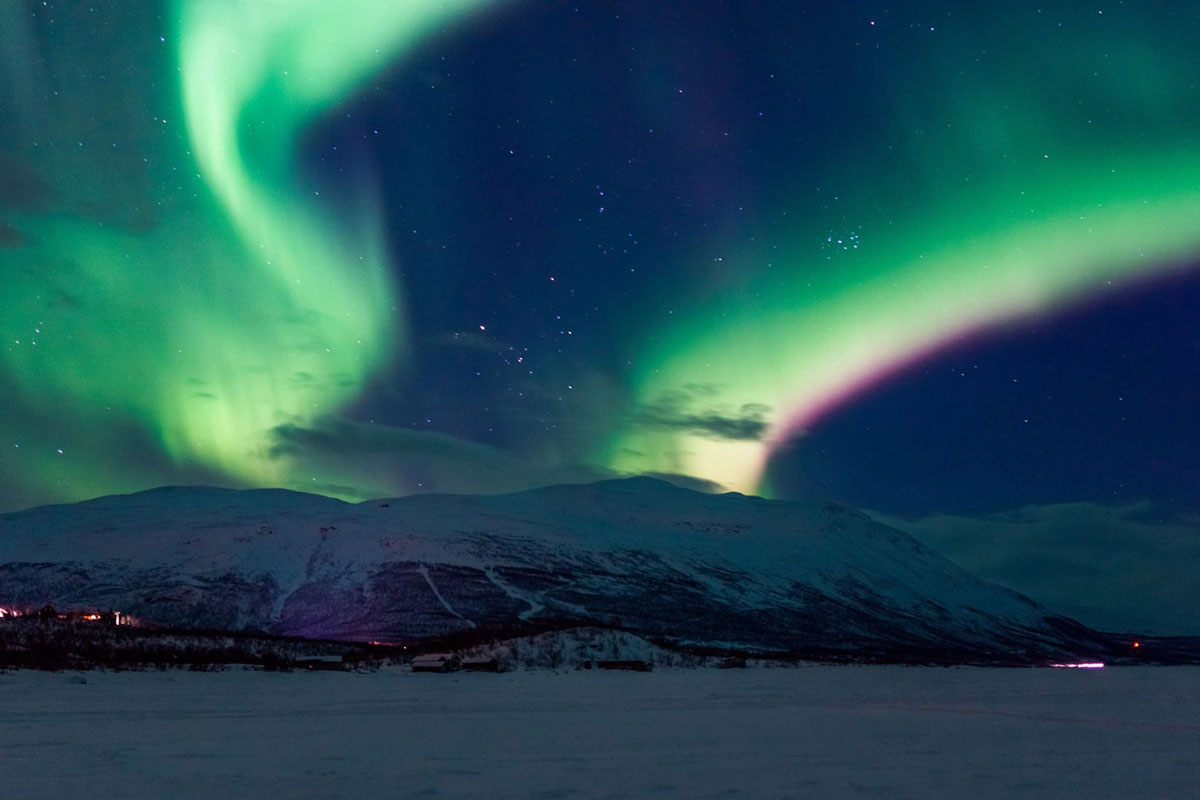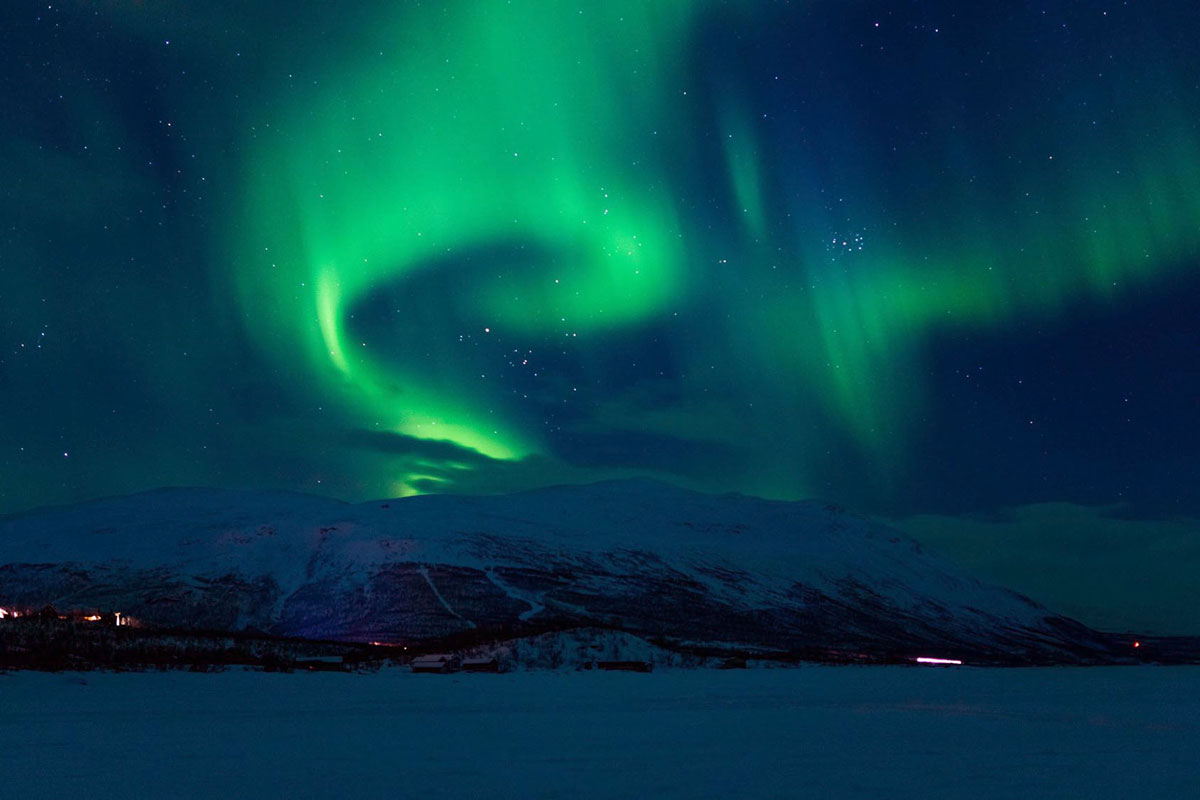One common misconception I encountered many times is that Auroras happen only in winter. That could not be more false!
The Northern Lights can happen at any time of the year when there’s solar activity. However, to be able to see them you’ll need a clear, dark sky, little to no pollution, and be positioned inside or as close as possible to the Arctic Circle.
That’s why your chances of seeing the Northern Lights are higher during wintertime when the nights are long. But that’s not all there is to it when discussing the best time to see the Northern Lights.

Before my first Aurora Borealis chasing trip I did a lot of research on the matter to increase my chances of actually witnessing the lights in real life.
And I was rewarded with some wonderful displays during a time when the odds were not great. Therefore I consider myself a bit of a self-taught expert on the matter.
What is the Aurora Borealis?
To better understand why is so hard to predict when the Northern Lights appear, you first need to understand what exactly an Aurora is.
A simple, non-technical explanation is that it’s a natural light display in the sky, occurring in a band near the magnetic poles of the Earth, that happens when charged particles from a solar explosion reach our planet’s geomagnetic field via the solar wind and they react to it.
It’s now clear that the Sun plays a major part in whether we can witness the Northern Lights or not. The more intense the solar activity, the higher the chances for a strong Aurora. This leads us to discuss the Sun’s 11-year cycle.

The Sun cycle and the Auroras
Some of the best Northern Lights displays occur during geomagnetic storms. These cannot be predicted way in advance, but we can get an idea of how much solar activity we can expect in a year, by looking at the solar cycle.
The sun follows an 11-year solar cycle where its activity experiences a peak and a low as its magnetic poles flip. The extremes of this cycle are defined by the number of observable sunspots on its surface – more sunspots indicate higher activity.
The best period for viewing the Northern Lights corresponds with the peak phase when the number of sunspots is at its highest. Solar activity and storms are the most intense during this time, providing more frequent opportunities to witness strong displays.
As the cycle progresses towards its low point, solar eruptions decrease and Auroras tend to be less common and weaker in appearance.
We are currently in Solar Cycle 25, which began in December 2019. The initial forecast predicted it would reach maximum activity around 2025, however, a recently revised prognosis now estimates the peak will happen between January and October of 2024 with a larger number of sunspots than was originally thought.
This means that these next few years are the perfect time to try and see the Northern Lights as the cycle then progresses toward its end and minimum, estimated to be around 2031.

Best time of the year to see the Northern Lights
Does this mean that you can only see the Aurora Borealis during certain years? No. Auroras can happen at any time, but the main conditions for you to be able to see them are:
- solar activity (the higher the better)
- clear, dark sky
- little to no pollution (including light)
- be located inside the Arctic Circle or as close to it as possible
I do feel obliged to mention though that even if all conditions are met, there’s still no guarantee you’ll be able to see the Lights. So mentally prepare yourself for this possibility as well.
However, if you’re lucky enough you can even experience one during a solar storm (when it’s much more powerful) like I did in 2018.. twice. This was less than 2 years before the low phase of the sun’s activity.
However, I would be lying if I said this was pure luck. At the time I was set on seeing the Northern Lights on a budget and since the odds were not that great since we were near a solar minimum, I decided to research and plan everything the best that I could to increase my chances.
And it worked! I saw the lights on 3 nights out of the 4 that I spent inside the Arctic Circle (if I don’t count that I also saw it on my way there) and during 2 of them I experienced a solar storm. Let me explain why that happened.

Generally speaking, the Aurora season is considered to start at the beginning of September and finish at the end of March. The reasoning behind this is simple: during this time the Northern regions from where the Lights are usually visible will have more hours of darkness.
But a dark sky is not enough as we all know. We also need good weather, an ideal position under the Auroral band, and solar activity. I solved the first two problems by choosing Abisko as the destination for my Aurora chasing attempt.
This Swedish village lies 250 km inside the Arctic Circle and it’s really small, so little pollution. But it’s nearby Lake Tornetrask that makes it truly special. The atmospheric effect of this lake and its surrounding mountains have allowed for a microclimate to develop in the area.

This means Abisko experiences more clear nights than many other well-known Aurora hunting destinations. The locals colloquially call this phenomenon the “blue hole” and in my experience it’s real.
The sun activity problem was harder to solve since no one could predict it with a lot of time in advance. However, there are two particular moments when we know that solar activity tends to increase and it’s around the Equinoxes.
Therefore I decided my first Aurora trip to be around the March Equinox and it was the perfect choice. I saw the lights on the 17th, 18th, and 19th of March 2018 with the mention that on the 18th and 19th KP was at 6, indicating a moderate solar storm.
Best time to see the Aurora Borealis
So in my opinion, the absolute best time of the year to see the Northern Lights is around the Equinoxes (20th of March and 23rd of September).
While it’s certainly extremely possible to see the Aurora in months like December or January, especially if you travel around the solar peak, if you really want to increase your chances my recommendation is to aim for one of the Equinoxes.

Now that you’ve discovered the best times to witness the mesmerizing Aurora Borealis, you’d probably also want to take some pictures of it, which might not be as easy as it sounds.
For this reason, I recommend you read my article on how to photograph the Northern Lights. It guides you through what equipment and settings you need in a simple language, perfect even for absolute beginners.
Happy Aurora chasing~


